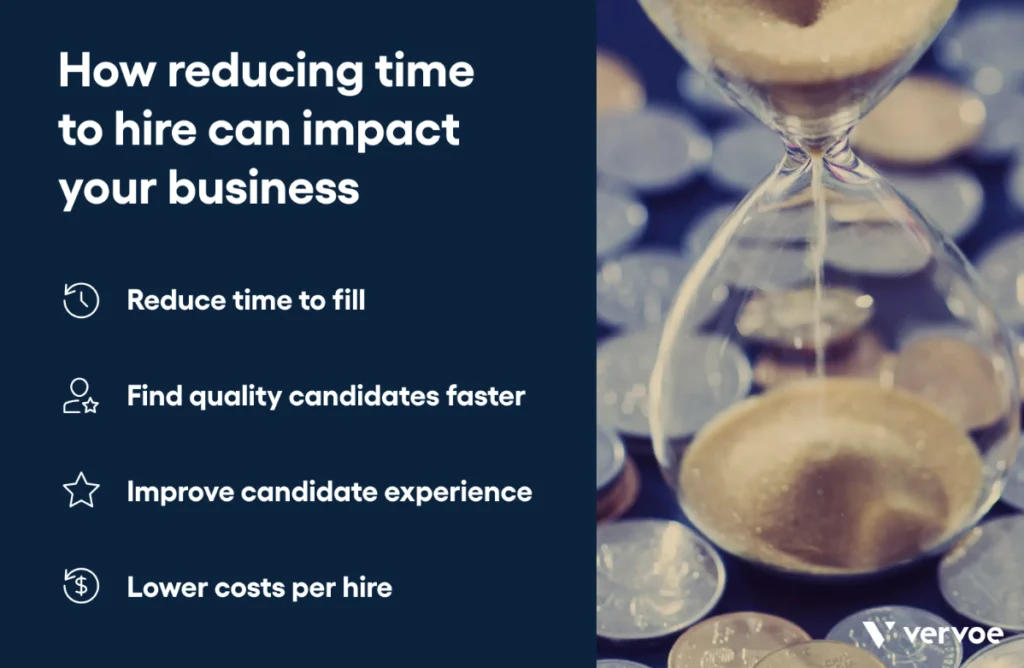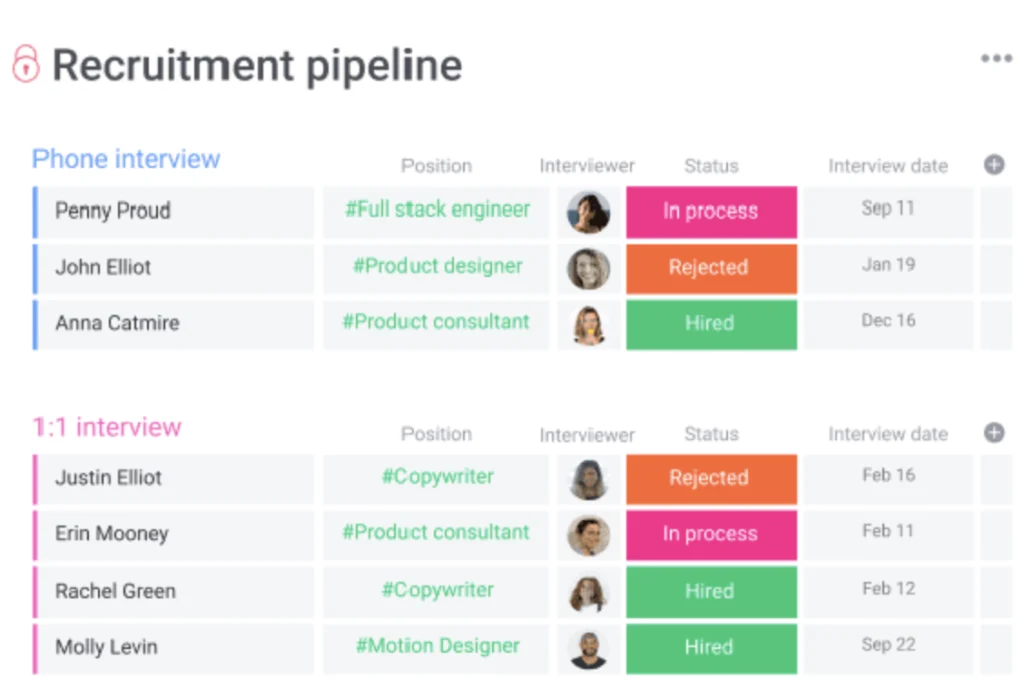7 Tips to Shorten Your Time to Hire Despite Labor Shortages
With the current talent shortage, time to hire is on the rise. As a result, employers take longer to find qualified candidates from the piles of applications. When you’re short on staff, your business struggles to keep up with daily tasks, which can result in lost revenue. Finding creative and innovative ways to reduce the time to hire ensures you don’t have talent gaps.
Learn seven tips to speed up your time to hire so you can continue running despite the talent shortage.
Key Takeaways:
- Time to hire is the time between receiving an application and filling a role.
- Reduce time to hire by streamlining the process through automation, set steps, and aligned teams.
- Optimizing time to hire starts with where you source candidates.
How Does a Shorter Hire Time Impact Your Business?
The time to hire metric refers to the days between a candidate submitting their application and accepting an offer. This is different from time to fill, which counts the entire process from when a role is available to when a business fills it. Recruiters use the metric to analyze the efficiency of their hiring process.
The average time to hire is 36 days. However, this average varies widely between industries. This time has several stages:
- 15%: Accepting applications
- 23%: HR screens the applications
- 37%: The hiring manager reviews the applications
- 23%: Company interviews qualified applicants
- 2%: Hiring the most qualified applicant
A shorter hiring time saves your company money and resources as you’ll lose fewer candidates along the way, lose less time from empty positions, and start seeing the financial benefits from the new hire sooner.

How Do You Calculate Time to Hire?
To find time to hire, track the time between accepting a candidate’s application and them accepting the offer. Often, businesses will start the clock when they post a job listing and end the clock when they fill the role. Then look at when the new hire submitted their application and subtract that time.
For example, you posted a job on day one and filled it in on day 36. However, the applicant you accepted submitted their application on day 10. So, you would subtract ten days from the total time to fill. In that case, the time to hire the applicant equaled 26 days.
7 Tips to Speed Up Your Time to Hire
Use these tips to learn how to reduce time to hire so you can onboard new talent sooner and not lose as many qualified applicants.
1. Analyze the Current Process
Before changing your hiring process, analyze how well it works. Then, collect data on each stage and find areas where you’re losing candidates or taking too long.
Asking candidates to fill out surveys will provide valuable first-party data you can use to analyze your process.
The areas where you see issues are where you’ll begin first when streamlining the process.
2. Establish a Set Process
Each new hire should go through the same process. By establishing a set process, you can move candidates through the steps faster since you know what action comes next.
An established process aligns each person involved in hiring, so everyone knows what to look for in an ideal candidate. Therefore, those in the earlier stages will qualify candidates that match what HR is looking for more accurately.
An established process also benefits the candidates since they know the expected timeframe and steps. When they know what to expect, they’re less likely to lose interest and look elsewhere during wait times.
3. Fill a Talent Database
Finding applicants can be difficult in the labor shortage as 3.3 million fewer people in the U.S. are working today than in 2020. So, employers often work with a smaller pool of applicants than before. This can delay the time to hire as there may be fewer qualified candidates.
A talent database is a talent pool of potential candidates. You can fill your database with past applicants, talent you find through job boards, and those you meet at networking events.
When you keep a talent database filled, you already have a collection of potential candidates when you post a job. As a result, you can start the time-to-hire schedule sooner with more qualified applicants than if you wait for candidates to send in their applications.
Televerde uses second-chance hiring to access an often-overlooked talent pool of qualified candidates. Hiring those impacted by incarceration broadens your talent pool and betters the community as you help previously incarcerated people improve their lives and build a better future.
4. Build Your Talent Pipeline
Your talent pipeline is pre-qualified candidates you have already identified and sorted through as part of your workforce development process. Some places to find talent for your pipeline are:
- Past applicants
- Talent database
- Current employees
Because these candidates are pre-qualified, you already went through most of the application stages and can save time in their hiring process.
5. Optimize Your Postings
While time to hire starts after candidates apply, your strategies should start much sooner so you attract more qualified applicants. That way, you can process the applications faster and move to the next hiring step sooner.
Start with a job posting that clearly outlines the job’s duties, company culture, and company purpose. Then, focus on your required qualifications to reduce the number of unqualified applicants.
Next, choose your job posting sites carefully by knowing what types of applicants frequent each channel. For example, the professionals you attract on LinkedIn will differ from those you find through Glassdoor or Indeed.
6. Use Automation to Filter and Process Applications
Automation can streamline many stages of the hiring process. For example, an application tracking system tracks applications, sorts data, and filters candidates. In addition, this system automatically pre-processes applications in a fraction of the time it would take to go through applications manually.

7. Invest in the Candidate’s Experience
The positive candidate experience increases your chances of them accepting the job offer. It also encourages them to leave positive reviews about your company to attract more applicants for future roles. Even candidates you don’t hire can leave reviews on job sites that can impact your future hires.
To improve the candidate experience, you can do the following:
- Give clear instructions
- Make the job listing easy to find, navigate, and complete
- Regularly follow up and check in with candidates
- Be transparent about the process and let them know what to expect next
- Be prepared and actively listen during interviews
Fill Your Talent Gaps Sooner
Filling roles with new hires is costly and takes time. Televerde can relieve the stress of filling positions with our talented team of sales and marketing experts. In addition, outsourcing allows you to quickly scale and keep up with business needs without the burden of hiring in-house employees.
Contact us for more information on our outsourcing services.


